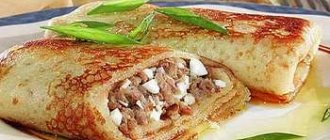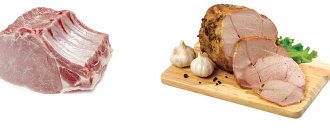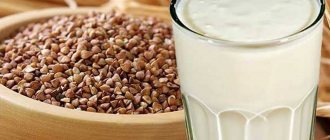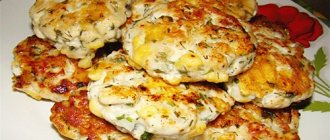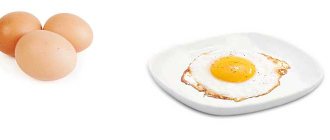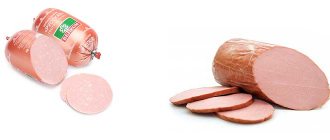How many calories are in a glass of kefir?
The nutritional value of this fermented milk drink is directly related to its fat content. There is a wide range of kefir on the market, ranging from low-fat products to higher-calorie products. But even kefir with the maximum amount of fat is not that high in calories. How many calories are in 1 percent kefir? A 100 g serving contains about 34 kilocalories. But one glass with a nominal volume of 200 ml contains from 75 to 80 kilocalories.
On a note! There is kefir on sale with 0% fat content. But most experts argue that this is just a marketing ploy. In fact, it is impossible to completely eliminate fat from fermented milk drinks.
Next in line is kefir with a fat concentration of 2.5%. What is its nutritional value? 100 g contains approximately 53 kilocalories. But the nutritional value of one glass with a nominal volume of 200 ml will fluctuate between 105-115 kilocalories.
And finally - the fattest kefir with a fat content of 3.2%. Its energy value will be a maximum of 60 kilocalories per 100 g of product. And one glass of this drink contains no more than 130 kilocalories.
It is not at all difficult to calculate how many calories are in a liter of kefir. So, a drink with 1% fat content in 1000 ml will contain from 375 to 400 kilocalories. As for a fermented milk drink with a fat concentration of 2.5%, the same volume will contain from 525 to 575 kilocalories.
As you understand, the fattest kefir will have the maximum nutritional value. Its nutritional value per 1 liter of product will be approximately 630 kilocalories.
Calorie content of kefir per 100 grams of kefir product
0.5% (half a percent), the so-called “zero fat content”
30 kcal.
1% (one percent) fat content
37 - 45 kcal.
1.5% (one and a half percent)
40 - 45 kcal.
2% (two percent) and 2.5% (two and a half)
50 - 55 kcal.
3.2% (three and two percent) fat content
56 - 65 kcal.
In goat kefir
Per hundred grams 30 kcal.
What is kefir rich in?
Not everyone likes this fermented milk product, but you can love it for its rich component composition and the incredible benefits it gives the body. Kefir is enriched with protein, which is quickly, easily and completely absorbed. It also contains various enzymes and healthy fats.
Component composition:
- a nicotinic acid;
- vitamins from group B;
- iodine;
- ascorbic acid;
- fluorine;
- calcium;
- sulfur;
- sodium;
- potassium;
- magnesium, etc.
It would take a very long time to list all the micro- and macroelements contained in fermented milk drinks. That is why the product is useful for people of different age categories.
Thus, nicotinic acid helps improve the condition of the skin and hair. And under the influence of vitamin PP, harmful cholesterol in the blood decreases. The benefits of vitamins from group B are not worth talking about. The elements are involved in the work of all vital systems and organs without exception. Such components bring particular benefits to the nervous system.
As for ascorbic acid, this vitamin is the main shield against infectious pathogens and viruses. With its help, the immune system is strengthened. Children should consume this drink to strengthen bone tissue thanks to the calcium it contains. In addition, the child’s nervous system will develop fully, and the functioning of the digestive tract will be normalized.
Men and women of all ages should also introduce this drink into their diet. Regular consumption of kefir helps strengthen tooth enamel, bone tissue, activate brain function, normalize sleep and strengthen the cardiovascular system.
Reason two - mechanism and areas of action
Due to the presence of lactic acid bacteria in the product, it has the following effects on the body:
- maintains normal intestinal microflora, thereby preventing putrefactive and fermentative processes. And therefore, flatulence and associated intestinal colic go away;
- increases the secretion of gastric juice in the stomach and pancreatic juice in the intestines, which makes the process of food digestion better without affecting appetite;
- removes urea, chlorides and phosphates from the body.
Now let's turn our attention to alcoholic fermentation, that is, to the “secret work” of lactic yeast inside our body:
- has a weak tonic effect, due to which it has a positive effect on the cardiovascular and nervous systems;
- normalizes the functioning of the urinary system, thereby increasing diuresis and enhancing nitrogen metabolism.
It is these indicators that make it possible to assert that kefir is useful at any age, and especially for good nutrition in early childhood.
Cleansing the body
Kefir is considered an essential fermented milk product during fasting days and diets. With its help you can start the fat burning process. But at the same time, the body will not experience a catastrophic lack of protein, since easily digestible protein is contained in such a drink.
On a note! Kefir can be supplemented with powdered cinnamon, various berries and even granulated sugar.
Beneficial features:
- suppression of gas formation in the intestines;
- normalization of stool;
- mild laxative effect;
- stabilization of the digestive process as a whole;
- promoting weight loss.
There are even special monotonous diets based solely on the consumption of kefir. The result, of course, from such express diets is amazing. But it is important not to harm yourself, since it is unthinkable to consume only kefir for a long time; you will still feel hungry.
On a note! Some people trying to lose weight combine kefir with apples for several days.
The main thing is to secure it once the desired result is achieved. If you immediately return to your usual diet, then the kilograms that were so difficult to lose will quickly return.
What happens if you drink kefir at night?
Ideally, in order for the body to receive all the beneficial elements it needs from food, the products must be broken down by intestinal bacteria. The process begins with bacteria processing food, and then the intestines suck out all the necessary substances. But, unfortunately, these processes are sometimes disrupted and the intestines are colonized by harmful microorganisms instead of beneficial ones. The result is disastrous - food is poorly digested, the body suffers from a lack of essential nutrients, and such unpleasant consequences as bloating, diarrhea, and nausea appear. Dysbacteriosis negatively affects other organs. Kefir is rich in millions of beneficial bacteria, whose task is not only to ensure comfortable intestinal function, but to destroy their harmful counterparts. If you suffer from bloating or indigestion, treat yourself to kefir.
Making kefir in the home kitchen
Some housewives have doubts about store-bought products. In this regard, they learned how to prepare a fermented milk drink at home. You don't need any special technology or expensive products. The base will be pasteurized milk. By the way, homemade kefir is most often prepared for small children. But you can also safely drink it, enjoying the taste and benefits.
On a note! To make homemade kefir you will need natural yogurt. You can use the sourdough product, but only without dyes, flavor enhancers or other additives.
Ingredients:
- pasteurized cow's milk - two glasses;
- bio-yogurt – one glass;
- granulated sugar - one teaspoon. spoon.
Preparation:
- As you can see, only natural ingredients are needed. By the way, you don’t have to add granulated sugar if you want to make a low-calorie drink. But for a child it is better to add a sweetener.
- We will need a thermos, which we thoroughly rinse with boiling water and dry.
- Pour pasteurized cow's milk into a bowl with a thick bottom, preferably enameled. We put it on the stove and turn the heat to minimum.
- Add granulated sugar and stir thoroughly until the crystals are completely dissolved.
- Please note that we do not boil the milk. Our goal is to warm it up to a temperature threshold of 40°. To determine the exact temperature, it is better to use a thermometer.
- Add kefir to the warm milk base. You can use the product on sourdough, then the kefir will turn out even tastier and healthier.
- Stir these ingredients with a whisk until the mixture acquires a homogeneous consistency.
- When warm, pour everything into a thermos and seal it tightly.
- At room temperature, leave the kefir to thicken for six hours.
- After the allotted time has passed, mix everything thoroughly.
- Kefir turns out to be quite thick, healthy and incredibly tasty.
- All that remains is to pour it into sterilized containers and store it in the refrigerator. Both children and adults will appreciate the taste of the drink.
Popular dishes made with kefir
Below we will take a closer look at the most popular kefir dishes, which can be easily and simply prepared at home.
Kefir pancakes
Ingredients:
| Product | Quantity |
| Wheat flour | 150 g |
| Kefir | 250 ml |
| Baking powder for the dough | 5 g |
| Granulated sugar | 12 g |
| Table salt | 5 g |
| Sunflower oil | 15 ml |
Step-by-step cooking process:
Mix kefir with sugar and table salt. Add baking powder to the sifted flour, then mix the mixture.
Then combine kefir with flour and baking powder. Mix the mixture thoroughly so that there are no lumps. Fry the pancakes in a heated frying pan sprinkled with sunflower oil.
Kefir pancakes are a wonderful dish, nutritious and light, its calorie content per 100 g is 193.2 kcal.
Pancakes with kefir
Ingredients:
| Product | Quantity |
| Wheat flour | 50 g |
| Kefir | 250 ml |
| Butter | 15 g |
| Chicken egg | 1 PC. |
| Table salt | 5 g |
| Ground ginger | 12 g |
Step-by-step cooking process:
Combine kefir with egg and butter. Beat this mass with a mixer.
Then add grated ginger and flour. Beat the mixture again and let it sit for a while, this will take about ten minutes.
Fry the pancakes by placing a ladle of them on a heated frying pan without any oil.
The calorie content of kefir pancakes per 100 grams is approximately 130 kcal.
Okroshka with sausage on kefir
Ingredients:
| Product | Quantity |
| Fresh cucumbers | 200 g |
| Chicken egg | 2 pcs. |
| Doctor's sausage | 75 g |
| Fresh radish | 75 g |
| Dill | 10 g |
| Green onions | 10 g |
| Mineral water | 50 ml |
| Kefir | 750 ml |
Cooking process:
Hard-boil the eggs, then cool them thoroughly and peel them. After this, cut the ingredient into small cubes, you can also grind the eggs in a blender.
Grind the remaining ingredients: sausage, radishes and cucumbers. It is desirable that all ingredients are the same size and shape. Also finely chop the greens.
Mix all the prepared ingredients in one pan and pour kefir diluted with water over them.
The calorie content of okroshka with sausage on kefir per 100 grams is 56.1 kcal.
Mannik on kefir
Ingredients:
| Product | Quantity |
| Semolina | 100 g |
| Granulated sugar | 35 g |
| Kefir | 125 ml |
| Baking soda | 3 g |
| Chicken egg | 1 PC. |
Step-by-step cooking process:
Place semolina in a bowl and pour kefir over it, then stir the mixture and leave to steep for about forty minutes.
After the specified time, add granulated sugar and baking soda to the swollen semolina. Beat the egg in a blender and place in a bowl with the mixture.
Mix the mixture thoroughly, pour into a greased pan and bake in an oven preheated to 180 degrees until cooked.
The calorie content of manna with kefir per 100 grams is 182.4 kcal.
Buckwheat with kefir
Ingredients:
| Product | Quantity |
| Buckwheat | 20 g |
| Kefir | 200 ml |
Step-by-step cooking process:
Rinse the buckwheat well in running water, remove the rotten and blackened grains.
Place the cereal in a saucepan and pour in kefir. Stir the mixture and cover with a cotton towel.
Leave the preparation for 8 hours or overnight, the dish can be eaten in the morning.
The calorie content of buckwheat with kefir per 100 grams is 51 kcal.
Kefir cocktail
Ingredients:
| Product | Quantity |
| Kefir | 800 ml |
| Banana | 1 PC. |
| Honey | 25 g |
Step-by-step cooking process:
Cut the banana into pieces, you can chop it with a grater.
Add kefir to it, mix the mass. Add honey and blend the cocktail with a blender.
The calorie content of kefir cocktail per 100 grams is 52.9 kcal.
Cold beetroot
Ingredients:
| Product | Quantity |
| Pickled beets | 300 g |
| Kefir | 900 ml |
| Potato | 100 g |
| Water | 500 ml |
| Chicken egg | 3 pcs. |
| Fresh cucumbers | 200 g |
| Dill | 1 bunch |
| Table salt | 6 g |
Step-by-step cooking process:
Cut the beets and cucumbers into small pieces. Boil the potatoes and eggs until tender, then finely chop.
Then boil the water and let it cool thoroughly.
Combine all the vegetables, finely chopped herbs, kefir, eggs and water in one pan. Salt the mixture to taste. Place the beetroot soup in the refrigerator; you will be able to eat it only after an hour.
The calorie content of beetroot per 100 grams is 43.3 kcal.
How to choose the right kefir?
Of course, the healthiest kefir is homemade. But modern conditions do not allow you to produce kefir yourself: you cannot raise a cow in an apartment. That is why it is very important to learn how to choose it correctly in the store:
- The best kefir is fresh kefir.
- Do not take the product in a swollen package; this only means that it has fermented heavily or has been in a warm place for a long time.
- The packaging must clearly state “kefir” and no derivatives.
- The right product must consist of two ingredients: milk and starter. No sweeteners or sugars. The calorie content of kefir 2.5% should be no more than 60 kcal.
Kefir is a huge benefit for the body, but only if you use the freshest and highest quality product possible.
